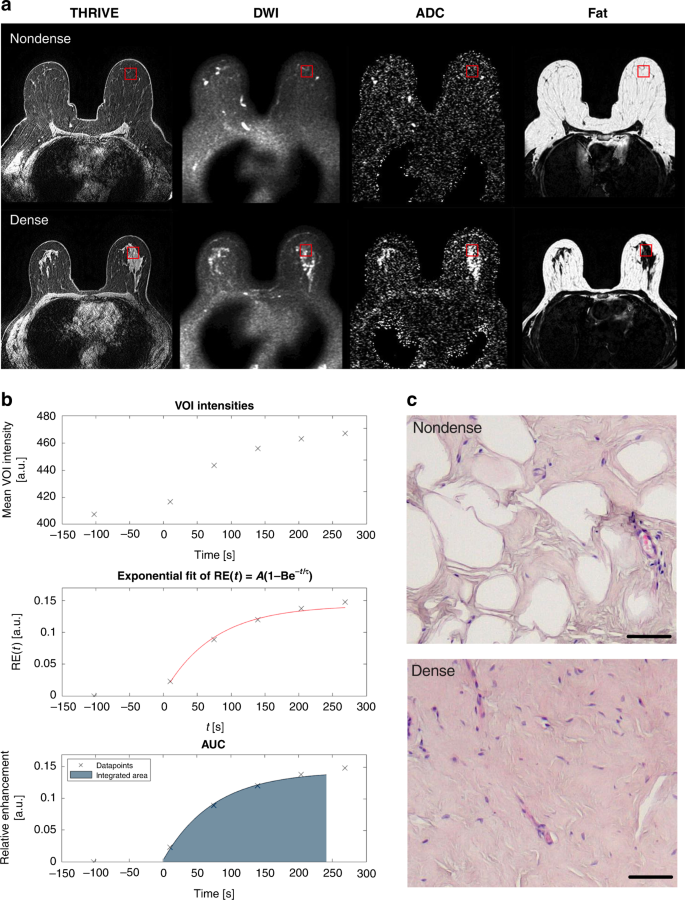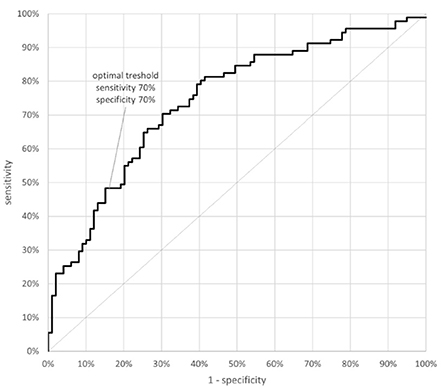2022-10-27 スウェーデン・リンショーピング大学
マンモグラムでは、腺組織と結合組織の両方が白く写る。そして、がんもマンモグラフィでは白く写る。つまり、密な乳房ではマンモグラフィーでがんの変化を発見することが難しくなることがある。
研究者らは、高密度乳房と非高密度乳房の生物学的特性が異なるかどうかを調査した。そのために、乳房密度やその他の乳房の識別因子を現在の方法よりも正確に測定できるMRI法を開発した。
44人の女性(乳房が緻密な人とそうでない人)を対象に、造影MRIを用いて調査を行った。研究者らは、もう一つの手法であるマイクロダイアリシスも使用した。
今回の研究では、健康な高濃度乳房と非高濃度乳房の間に予想外に大きな違いがあることが示された。研究者らは270のタンパク質のレベルを測定し、そのうち124のタンパク質のレベルが高濃度乳房で上昇していることを発見した。これらのタンパク質は、炎症、新しい血管の形成、細胞の成長などの基礎的なプロセスを通じて、がんの発生と関連している。
<関連情報>
- https://liu.se/en/news-item/possible-biological-explanation-for-increased-cancer-risk-in-dense-breasts
- https://www.nature.com/articles/s41416-022-01976-3
乳房密度は、マルチパラメトリック磁気共鳴画像バイオマーカーおよび腫瘍促進タンパク質とその場で強く相関。 Breast density is strongly associated with multiparametric magnetic resonance imaging biomarkers and pro-tumorigenic proteins in situ
Peter Lundberg,Mikael F. Forsgren,Jens Tellman,Johan Kihlberg,Anna Rzepecka & Charlotta Dabrosin
British Journal of Cancer Published:22 September 2022
DOI:https://doi.org/10.1038/s41416-022-01976-3

Abstract
Background
High mammographic density is an independent risk factor for breast cancer by poorly understood molecular mechanisms. Women with dense breasts often undergo conventional magnetic resonance imaging (MRI) despite its limited specificity, which may be increased by diffusion-weighted imaging (DWI) with apparent diffusion coefficient (ADC) and contrast. How these modalities are affected by breast density per se and their association with the local microenvironment are undetermined.
Methods
Healthy postmenopausal women attending mammography screen with extremely dense or entirely fatty breasts underwent multiparametric MRI for analyses of lean tissue fraction (LTF), ADC and perfusion dynamics. Microdialysis was used for extracellular proteomics in situ.
Results
Significantly increased LTF and ADC and delayed perfusion were detected in dense breasts. In total, 270 proteins were quantified, whereof 124 related to inflammation, angiogenesis, and cellular growth were significantly upregulated in dense breasts. Most of these correlated significantly with LTF, ADC and the perfusion data.
Conclusions
ADC and perfusion characteristics depend on breast density, which should be considered during the implementation of thresholds for malignant lesions. Dense and nondense breasts are two essentially different biological entities, with a pro-tumorigenic microenvironment in dense breasts. Our data reveal several novel pathways that may be explored for breast cancer prevention strategies.


